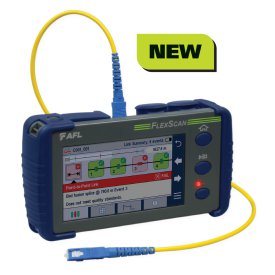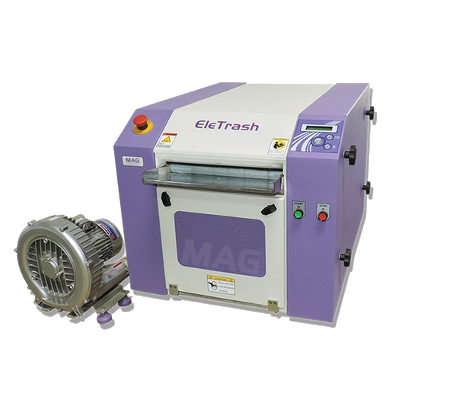Upcoming developments in optical fibre diameter analyzer technology for fiber production
Discovering the Effect of Robotic Vision on Modern Manufacturing Techniques and Top Quality Control
Robotic vision innovation is transforming the landscape of contemporary manufacturing and top quality control. By incorporating advanced imaging systems and artificial knowledge, manufacturers can accomplish extraordinary degrees of accuracy and effectiveness. This change not just maximizes manufacturing procedures yet likewise addresses critical difficulties in maintaining product criteria. As sectors increasingly depend on these developments, the ramifications for future manufacturing practices continue to be to be completely explored. What will this imply for the competitive characteristics of the marketplace?
Understanding Robotic Vision Modern Technology
Robotic vision technology acts as the foundation of automation in contemporary production. It incorporates the usage of video cameras, sensing units, and fabricated intelligence to make it possible for robotics to analyze and reply to visual info from their environment. This technology allows robotics to identify, situate, and assess things, making them efficient in executing complex tasks such as setting up, examination, and material handling with accuracy. The assimilation of artificial intelligence formulas further improves the capability of robot vision systems, allowing them to adjust to differing problems and enhance in time. By refining images and data in real-time, robotic vision systems can promote quicker decision-making and decrease errors in making processes (fibre testing equipment). This innovation not just improves functional effectiveness yet likewise guarantees that quality requirements are fulfilled consistently. As the manufacturing landscape continues to advance, recognizing the intricacies of robot vision technology ends up being important for leveraging its prospective completely
Advantages of Robotic Vision in Manufacturing
Robotic vision technology provides substantial advantages in production by improving precision and precision in tasks such as top quality control and assembly. This raised level of detail warranties that products satisfy strict criteria, minimizing waste and revamp. In addition, the combination of robotic vision can bring about enhanced production efficiency, enabling makers to enhance their processes and accomplish higher output rates.
Enhanced Precision and Accuracy
In modern production, enhanced precision and accuracy are critical for optimizing production procedures and ensuring item high quality. Robotic vision systems enable makers to do intricate tasks with impressive consistency. These systems utilize innovative imaging technologies to identify minute details and variants in materials, parts, and finished items. By analyzing aesthetic data in real-time, robot vision significantly lowers human mistake, bring about fewer problems and greater quality standards. Furthermore, enhanced precision in dimensions and placing facilitates better alignment in setting up processes, which is essential for detailed layouts. Inevitably, the combination of robot vision not only strengthens the dependability of manufacturing results yet also cultivates self-confidence amongst consumers concerning item integrity and performance. This precision is crucial in sectors where quality is paramount.
Boosted Manufacturing Efficiency

Producers are increasingly transforming to vision systems to increase manufacturing efficiency throughout different procedures. These advanced systems enable real-time examination and monitoring, considerably reducing downtime triggered by errors or flaws. By incorporating robot vision, companies can automate quality control, permitting for faster identification of problems and decreasing the demand for human treatment. This brings about structured operations, as robotics can promptly adapt to changes in production demands without compromising accuracy. Furthermore, vision systems assist in much better stock monitoring by accurately tracking elements and products, making sure ideal source use. Ultimately, the fostering of robot vision not just boosts effectiveness but likewise adds to higher output prices, minimized operational costs, and enhanced general efficiency in the manufacturing field.
Enhancing Quality Control Processes
Robotic vision technology considerably enhances top quality control processes in manufacturing by using accuracy assessment techniques. These innovative systems assist in real-time problem detection, making certain that items satisfy stringent high quality criteria. Consequently, suppliers can minimize waste and boost total performance.
Precision Evaluation Techniques
Accuracy evaluation techniques have changed high quality control processes in production, making it possible for the discovery of minute flaws that conventional approaches might forget. These strategies utilize advanced imaging innovations, such as high-resolution cameras and laser scanning, to accomplish unrivaled accuracy. By making use of robotic vision systems, suppliers can automate evaluation tasks, guaranteeing consistent efficiency and lowering human error. The combination of equipment understanding formulas furthermore improves these systems, permitting them to adjust and improve gradually. On top of that, accuracy assessment assists in the recognition of refined variations in product dimensions and surface area coatings, which can substantially influence total item quality. As an outcome, manufacturers can carry out restorative actions a lot more swiftly, eventually causing minimized waste and boosted consumer satisfaction.
Real-Time Flaw Detection
Using innovative imaging innovations, real-time flaw discovery changes quality assurance procedures in manufacturing. By incorporating high-resolution cams and innovative formulas, producers can swiftly identify abnormalities during production. This technology assists in prompt corrective activities, minimizing waste and improving total efficiency. Real-time systems assess items as they relocate along the setting up line, guaranteeing that problems are discovered and attended to right away production routines. In addition, the execution of artificial intelligence boosts the accuracy of these systems, allowing them to adjust to look here brand-new issue patterns with time. Subsequently, suppliers take advantage of improved product quality and lowered functional costs. Inevitably, real-time defect discovery not only improves processes yet also fosters a culture of continual enhancement in modern-day manufacturing atmospheres.
Real-Time Data Analysis and Decision Making
In the vibrant landscape of manufacturing, real-time data evaluation encourages systems to make swift, educated choices. By leveraging advanced robotic vision technologies, manufacturers can collect and process huge amounts of information instantly. These systems assess aesthetic inputs to keep an eye on production procedures, ensuring that any inconsistencies from high quality requirements are discovered and addressed immediately. Suppliers can maximize operations by reallocating sources and adjusting workflows based on real-time insights.
The integration of information analytics allows for anticipating maintenance, where potential devices failings are anticipated prior to they interfere with manufacturing. This positive technique minimizes downtime and boosts total efficiency. robotic vision. The capability to make data-driven choices in genuine time significantly reduces waste and enhances item quality, permitting makers to respond to market needs promptly. Consequently, real-time data analysis not just simplifies manufacturing however also promotes a society of continual renovation in modern manufacturing settings
Challenges in Carrying Out Robotic Vision Systems
Executing robotic vision systems in making offers a variety of challenges that can impede their efficiency. One considerable obstacle is the complexity of incorporating these systems with existing machinery and process. Manufacturers typically face compatibility problems with legacy devices, leading to raised prices and downtime. Additionally, the irregularity in item shapes, sizes, and products can make complex the calibration of vision systems, requiring extensive training and fine-tuning.
One more challenge hinges on processing big quantities of aesthetic information in actual time. High-performance computer sources are necessary, which might call for more financial investment in facilities. Moreover, there is a lack of skilled employees with the ability of handling and maintaining these sophisticated systems, bring about potential functional ineffectiveness. Making sure the integrity and accuracy of robotic vision systems under differing ecological problems positions a constant difficulty. Resolving these concerns is essential for making best use of the prospective advantages of robotic vision in production.
Future Fads in Robotic Vision for Production
As innovations in expert system and maker learning proceed to develop, the future of robot vision in production shows up progressively appealing. Arising patterns show a shift in the direction of more sophisticated imaging modern technologies, such as 3D vision systems and hyperspectral imaging, which will certainly improve accuracy in quality control procedures. Assimilation with the Internet of Things (IoT) will certainly enable real-time information evaluation, enabling robotic systems to adapt swiftly to modifications This Site in the production setting. The development of collective robotics (cobots) outfitted with sophisticated vision abilities is anticipated to facilitate seamless human-robot communications, enhancing performance and safety on the manufacturing facility floor. In addition, the incorporation of edge computing will certainly equip robot vision systems to process data locally, decreasing latency and enabling faster decision-making. These innovations will not just streamline making procedures but also greatly boost item high quality, placing robot vision as a foundation of future commercial procedures.
Regularly Asked Inquiries
How Much Does Robotic Vision Modern Technology Normally Price?
Robotic vision innovation commonly costs in between $10,000 and $100,000, depending on the intricacy and specifications. Factors influencing cost include sensor high quality, software application abilities, and assimilation needs, making it vital to evaluate certain project needs.
What Industries Are A Lot Of Affected by Robotic Vision Improvements?
Robotic vision advancements considerably influence industries such as manufacturing, vehicle, electronic devices, and food handling - robotic vision. These industries take advantage of boosted automation, enhanced quality assurance, and enhanced efficiency, resulting in streamlined operations and reduced labor prices
Can Robotic Vision Equipments Be Integrated With Existing Machinery?
Robotic vision systems can certainly be incorporated with existing equipment. This integration improves operational performance, allowing producers to leverage advanced innovations without the demand for complete overhauls, thus maximizing production processes and maintaining high quality criteria.

What Skills Are Needed to Run Robotic Vision Solutions?
Running robot vision systems requires efficiency in programs, an understanding of equipment learning, understanding of image handling strategies, and the capability to troubleshoot published here software and hardware concerns, making certain seamless combination and ideal efficiency within making environments.
Are There Any Type Of Safety And Security Issues With Robotic Vision in Manufacturing?
